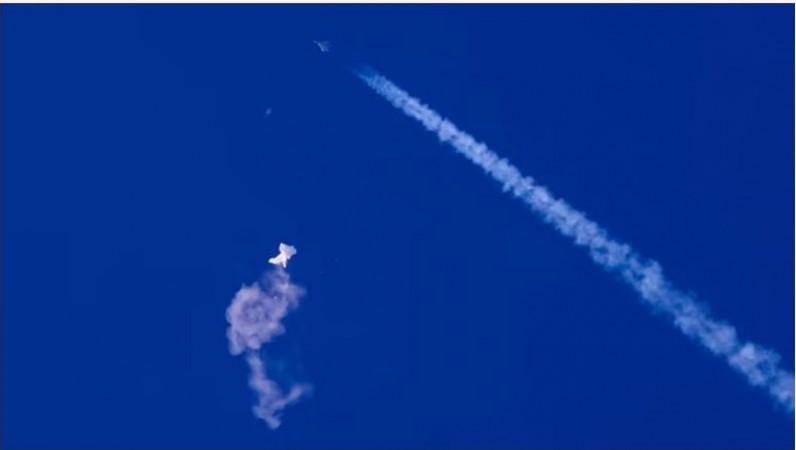
In recent developments, Taiwan reported that six Chinese balloons were observed either flying over the island or through airspace just north of it on Monday. The Chinese military presence in the region was further heightened as warplanes and navy ships from China were also detected in the area. The purpose of these balloons, which usually disappear into the Pacific to the east, remains undisclosed.
The Defence Ministry of Taiwan documented these balloon sightings on a list detailing the Chinese People's Liberation Army's activities in the waters and airspace surrounding Taiwan. One balloon passed near the southern city of Pingtung, while the others flew just north of the strategically significant naval base in the port of Keelung.
Although the explicit military function of these balloons remains unclear, they seem to be part of a larger campaign of harassment against Taiwan, a self-governed island that China claims as its own territory. China has consistently vowed to reclaim Taiwan by force if necessary.
This incident echoes a similar situation in the United States last year when President Joe Biden promised stricter rules for tracking, monitoring, and potentially shooting down unknown aerial objects. This commitment came after a three-week incident involving a suspected Chinese spy balloon traversing much of the United States. The U.S. classified the balloon as a military craft and shot it down, recovering what was identified as sophisticated surveillance equipment. China, in response, insisted it was a weather balloon off course and criticized the U.S. for overreacting.
These tactics are sometimes referred to as China's "gray area tactics," causing concern among adversaries without directly provoking a confrontation. China has a history of blurring the lines between military and civilian functions, particularly evident in the South China Sea, where it operates a vast maritime militia, ostensibly civilian fishing boats acting under government orders to assert territorial claims.
China's intimidation campaign against Taiwan includes regular deployments of warships and planes in the waters and airspace around the island. This often involves crossing the middle line of the Taiwan Strait, a 160-kilometer-wide body of water that separates Taiwan from mainland China. The split between the two regions occurred following the rise of Mao Zedong's Communists to power on the Chinese mainland.
Between Sunday and early Monday morning, Taiwan's Defence Ministry reported detecting four Chinese warplanes and four navy ships around Taiwan. In response, Taiwan's military closely monitored the situation using combat aircraft, navy vessels, and land-based missile systems.
Leading up to Taiwan's recent presidential and legislative elections on January 13, China had increased such activities and rhetorical threats. Despite Beijing's efforts, the independence-leaning Democratic Progressive Party secured a third consecutive term in the presidency, with Vice President Lai Ching-te (William Lai) assuming office. The pro-unification Nationalist Party gained only one more seat in the legislature than the Democratic Progressive Party. Additionally, former Taipei Mayor Ko Wen-je's party garnered support, particularly from disillusioned young voters.
Taiwan Elections 2024: Know its Global Significance and Geopolitical Implications